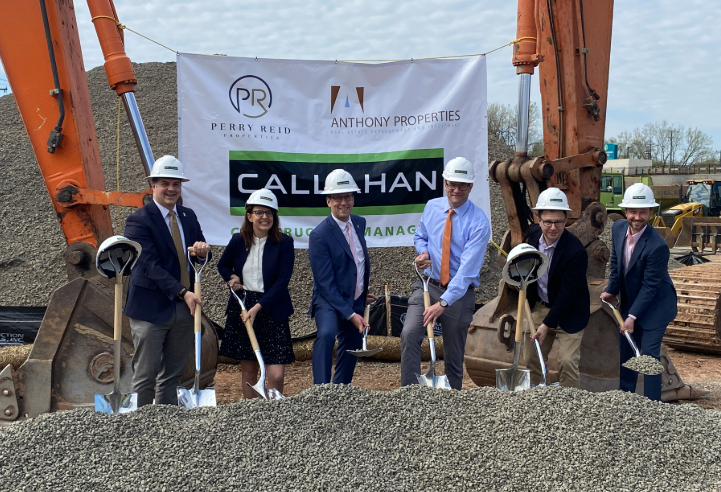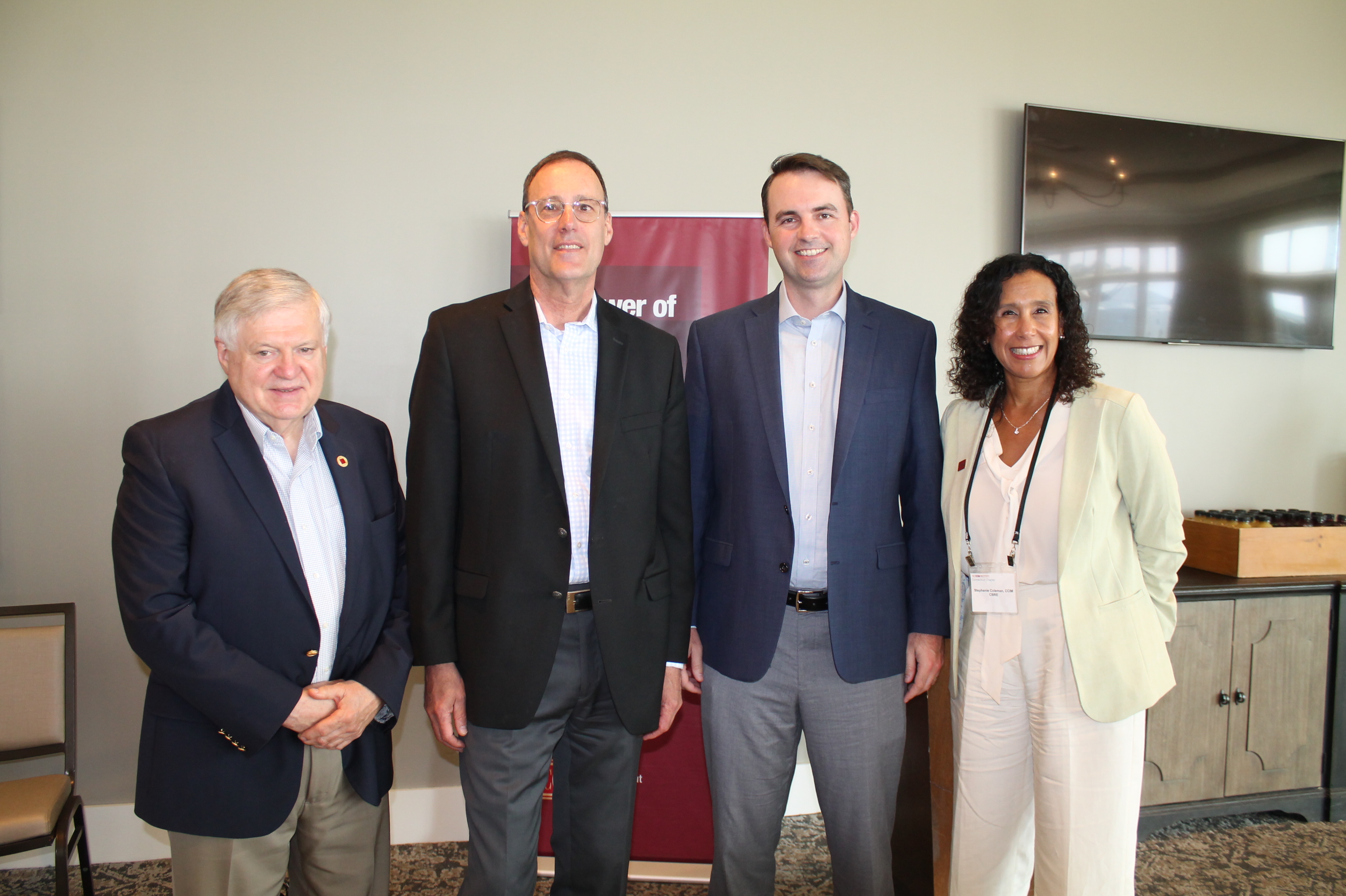Trends in lab design in 2021 from the impacts of the novel coronavirus pandemic - by Christopher Ladd

Ci Design
The impacts of the novel coronavirus pandemic have triggered an urgent need for medical research, manufacturing, and advanced facilities, which has inspired unprecedented growth in the life science industry.
This year, as designers, we continue to see an increase in the number of business entities, property managers, and developers seeking to convert conventional commercial space into laboratories and R&D facilities. Although many components of lab design will always be specific to a particular client’s goals and needs, good lab design is currently trending towards certain common objectives.
Here are some trends in lab design for 2021 that are likely here to stay.
Air Quality: The pandemic has changed many norms in our daily lives, including increasing concerns about employee safety in various work environments. Previously, facility managers focused on controlling air quality and room environments primarily in the lab areas of buildings, with the objective of preventing cross-contamination between product and personnel. More recently, facility managers have expanded this focus on air quality control to include adjacent office, administrative, communal, and collaborative spaces. The implementation of advanced air filtration systems and environmental controls improves air quality, minimizes potential contamination, and ensures the safety of all employees throughout these building areas.
Program Shift: As remote work has become more of the norm for many job types, the space required for offices has decreased. The percentage of workers permanently working from home is expected to double in 2021, according to a survey from Enterprise Technology Research (ETR). As a result, facility managers are converting some of the unneeded office area into additional lab and lab support spaces, which is leading to substantial upgrades to building infrastructure and a higher ratio of lab space to office space in many facilities.
Developers are also converting office space that may be vacant or underutilized into lab space, which often requires eliminating intermediate floors within multi-story buildings to accommodate cGMP height requirements.
Collaborative Team Spaces: Designing spaces that encourage creative collaboration continues to be a trend in lab design. Formal project innovation rooms, team rooms, conference areas, and demo spaces are becoming integral parts of lab facilities, especially when scrum seating and impromptu casual meeting spaces are being reduced. These areas encourage team meetings and brainstorming sessions while facilitating the development of new research and groundbreaking products.
Flexibility and Adaptability: While research and development labs are generally getting larger, the pandemic has highlighted how quickly the world can change and priorities can shift. With that in mind, architects are creating R&D labs that are more flexible and adaptable with moveable benches, modular furniture and equipment, and ceiling utility panels (CUPs). These allow labs to be reconfigured quickly and easily without the need to undergo a full renovation as research or manufacturing priorities change.
Similarly, lab space has become more fluid and open to allow researchers to work alone or in teams. The result is more efficient and flexible lab space that can be used by corporations or institutions to produce more research or by development teams to build lab hoteling or lab-ready space.
New Programming Needs: The A/E/C industry is also seeing an increased need for larger cold storage and cold chain management solutions. Just as some COVID-19 vaccines must be kept at below freezing temperatures, the raw materials needed for vaccine development and research often also need to be stored at highly-regulated low temperatures. Many labs require cold rooms to accommodate the receiving of raw materials and purposefully designed solutions for the shipping of finishing goods.
Facility managers are also seeking creative solutions for chemical and specialty gas distribution and storage that will limit the amount of costly Hazard Use Group requirements within a facility.
Finally, developers continue to build lab hoteling facilities with appropriate equipment for different types of research and technologies as well as lab-ready spaces that have sufficient power, cooling systems, and redundancy for a lab conversion. Speculative lab development has become less prominent.
Sustainability: Sustainability has been trending for many years, with many facility managers trying to reduce their carbon footprint by using an adaptive reuse strategy to repurpose existing buildings and spaces when possible instead of building new. They are also looking at alternative energy sources, such as solar power and energy recovery systems. To reduce energy consumption, many engineering systems are being designed to include built-in redundancies, occupancy/vacancy sensors, and elaborate utility control and monitoring systems for the lab spaces and buildings.
A/E Design Process Efficiency: Being first to market continues to be a significant driver of project schedule. As designers, property/facility managers, and owners are under increasingly tighter deadlines and project delivery requires accelerated schedules, the use of Building Information Modeling (BIM) and Revit continues to be more and more important. This technology stack allows design and engineering teams to easily visualize complex design conditions and efficiently coordinate mechanical, electrical, plumbing, and structural systems within a project.
Ci has taken the next step towards ultimate efficiency by integrating these models with our equipment matrices. This enables our teams to generate accurate 3D family associations, accommodate the requirements of complex equipment, and allow for coordinated updates whenever a piece of equipment is added or modified.
Additionally, 3D laser scanning and drones are making existing conditions observations and measurements more efficient and accurate. This means that existing conditions drawings can be completed faster and the design process can begin sooner.
Lean Integrated Project Delivery: While Integrated Project Delivery (IPD), where the team takes a collaborative approach through all phases of design, fabrication, and construction to reduce waste and optimize project results, has been a trend for a while, clients are now seeking even more efficiency in their projects. They are evaluating the risks versus the rewards and implementing lean strategies when assembling their project team. For these strategies to be effective, the team must trust each other, be unified in their approach, and support a common goal.
Awareness of Standard Operating Procedures: The COVID-19 pandemic has brought with it a heightened awareness of Standard Operating Procedures (SOP) for many businesses. Facility managers have put new protocols in place, including temperature and PPE checkpoints for building access, and specifically outside of the lab spaces, to ensure the safety of staff members. Many have even introduced these checkpoints as permanent program requirements and have built dedicated physical spaces for these procedures.
While many of the trends we are seeing in 2021 for lab design are a reflection of the ongoing pandemic crisis, we anticipate that they are here to stay. Lab design and architecture will continue to evolve to protect the safety of all users, to allow for increased adaptability as programming and priorities shift, and to promote sustainability. The design process will also continue to become more efficient through the creative use of new technologies.
Christopher Ladd, AIA, NCARB, is vice president, managing principal, science & technology at Ci Design, Boston, Mass.
Highcap Group brokers $41.1 million sale of two building multifamily portfolio
Norwalk, CT Highcap Group has completed the sale of two luxury multifamily properties with a total of 120 units for a combined purchase price of $41.4 million.








